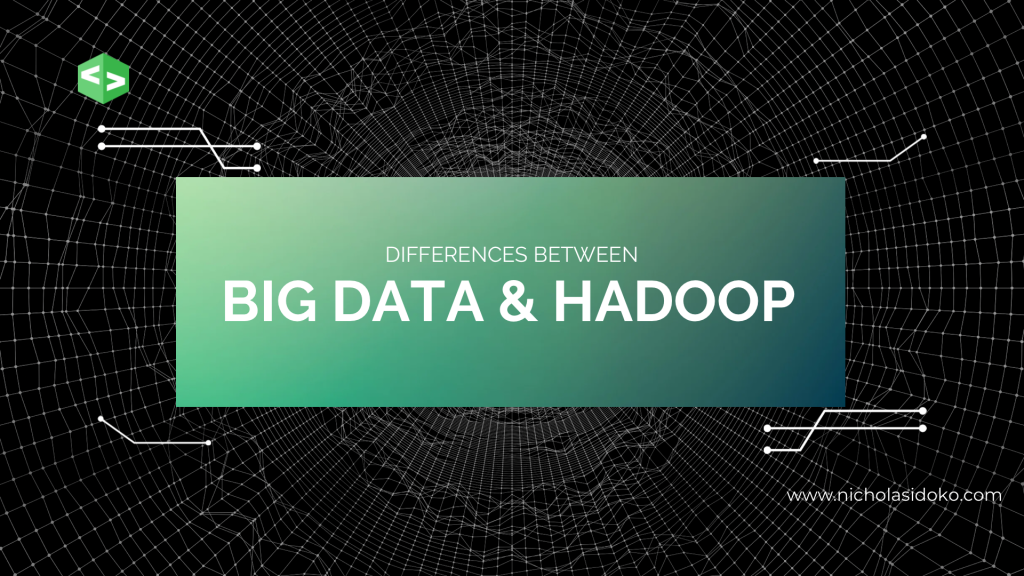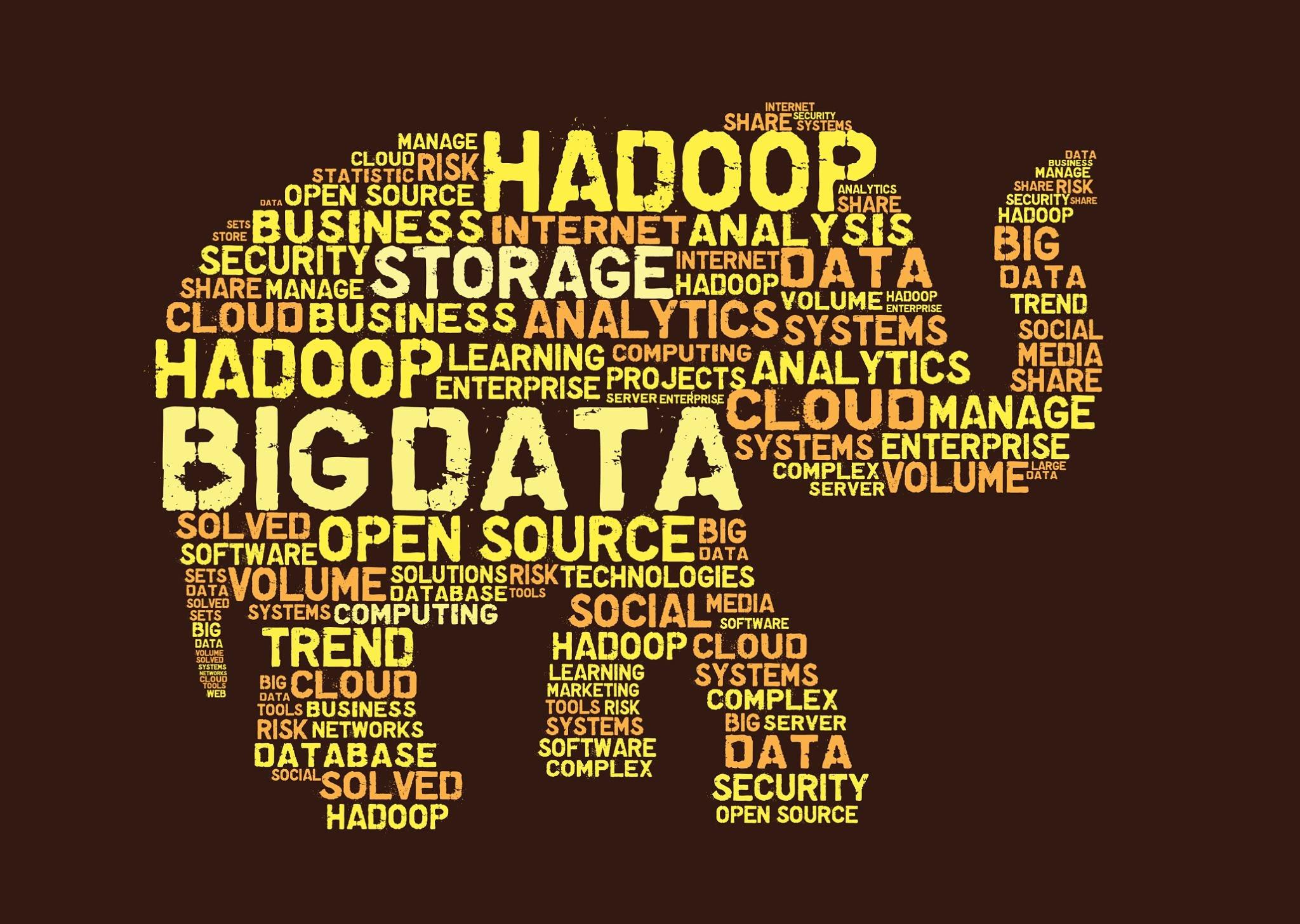
The terms Big Data and Hadoop are certainly familiar to you if you work in the corporate world. One of the key areas of interest for tech enthusiasts is their relationship. And it’s actually quite amazing how these two linked concepts differ from one another. Big data is a wonderful resource that is useless without a manager. Hadoop is the asset handler that maximises the asset’s value. Let’s examine each closely before going into their distinctions.
What is Big Data?
Large data sets are referred to as “Big Data.” Such enormous volumes that it becomes required to deal with them using particular procedures and tools. Traditional technology and methodologies cannot effectively manage big data because of its size, rate of increase, and variability.
Businesses employ big data analytics extensively to support their expansion and development. This mostly entails using different data mining techniques on the provided data collection, which will subsequently help them make better decisions. Depending on the needs of the company, there are a variety of solutions for processing big data, including Hadoop, Pig, Hive, Cassandra, Spark, Kafka, etc.
These software programmes are widely distributed and have the ability to scale with the volume and rate of data generation. They are built to manage massive amounts of data. Predictive analytics, user behaviour analytics, and other sophisticated data analytics techniques are currently used to extract value from huge data. There is no established minimum data size, nevertheless, for a set of data to qualify as big data.
Big data has three different formats.
- Structured: Organised data format with a fixed schema. Ex: RDBMS
- Semi-Structured: Partially organized data which does not have a fixed format. Ex: XML, JSON
- Unstructured: Unorganized data with an unknown schema. Ex: Audio, video files, etc.
What is Hadoop?
Hadoop is a programme or a tool to maximise the value from big data, which is a very valuable asset. An open-source software tool called Hadoop was created to address the issue of storing and processing huge, complicated data collections.
One of the most well-known and commonly used software frameworks for storing and processing huge data is definitely Apache Hadoop. It is a condensed programming model that makes it easy to build and test distributed systems and disseminate knowledge automatically and economically over a pool of clustered machines. Hadoop’s capacity to expand from a single server to thousands of common server machines is what sets it apart. Apache Hadoop is the de facto software framework for storing and analysing enormous amounts of data.
The Hadoop Distributed File System (HDFS) and the MapReduce programming style are two essential parts of the Hadoop ecosystem.
Hadoop Distributed File System: The information is not stored on a single machine, but is distributed among all the machines that make up the cluster.
MapReduce Framework: MapReduce is a systematic approach that uses the HDFS distributed file system for the parallel processing of data. The system is structured through a master-slave architecture where the master server of each Hadoop cluster receives and queues user requests and assigns them to the slave servers for processing.
Differences Between Big Data and Hadoop
Basics
The two most well-known concepts, big data and hadoop, are so intimately intertwined that without hadoop, big data would not be useful or meaningful. Consider big data as a deep value asset, but you need a technique to extract some value from it. Therefore, Apache Hadoop is a utility tool created to maximise the value of large data. Large, complex data sets that are too difficult for conventional data processing systems to evaluate are referred to as “big data.” A software system called Apache Hadoop is used to solve the issue of storing and analysing huge, complicated data volumes.
Concept
Data is useless and difficult to use in its unprocessed state unless it is transformed into information. In this digital age, we are surrounded by enormous amounts of data that we view and consume. For instance, social media platforms and apps like Twitter, Instagram, YouTube, etc., have a tonne of content. Big data therefore refers to the enormous quantities of both structured and unstructured data as well as the information we can get from them, such as patterns, trends, or anything else that would make them much easier to work with. The storage and processing of those huge datasets are handled by Hadoop, a distributed software framework, over a network of clustered servers.
Goal
The majority of the data in its current state is user-generated information and is therefore raw data that needs to be examined and saved. Data sets are expanding out of control and at an exponential rate. Therefore, we need to find ways to manage all of this organised and unstructured data, and we also need a straightforward programming paradigm that will deliver the best answers for the big data era. In contrast to conventional computational models, this necessitates a large-scale computational model.
A distributed system like Apache Hadoop allows computation to be split up across a number of machines as opposed to just one. It is made to handle and distribute massive amounts of data among the cluster’s nodes.
Veracity
It refers to how reliable the Data is. Hadoop-processed data can be processed, analysed, and used to improve decision-making. On the other hand, because there are so many different data formats and volumes in big data, which makes it difficult to interpret and comprehend, big data cannot be completely depended upon to make any correct judgement. Big Data is therefore not completely trustworthy or reliable for making decisions.
Range of Applications
Numerous commercial sectors, including banking and finance, information technology, the retail industry, telecommunications, transportation, and healthcare, use big data in a wide variety of ways.
Big Data can be utilised for a variety of purposes, including fraud detection, sentiment analysis, fraud prevention, self-driving Google cars, weather forecasting, cyberattack protection, and research and science.
YARN for cluster resource management, MapReduce for parallel processing, and HDFS for data storage are the three primary components that Hadoop is used to handle. It can be used to quickly and easily process complicated data for real-time decision-making and business process optimization.
Manageability
Hadoop can be managed very easily because it functions much like a tool or programme that can be written. However, despite its name, big data is not always easy to manage or handle. This is mostly due to the sheer size, scope, volume, and variety of the data sets. Only huge companies with ample resources can manage and process this kind of data because it is difficult to do so.
Conclusion
Big data is a really valuable resource that is useless unless we figure out how to use it. Real-world examples of big data include social media platforms like Twitter, Facebook, Instagram, YouTube, and others. These platforms present certain difficulties for the modern technologies we depend on.
Big data is a term used to describe this unstructured, quickly expanding data. However, working with data in its raw form is exceedingly challenging. In order to extract something meaningful from these data, such as a pattern or trend, we need a mechanism to collect, store, process, and analyse them. Hadoop is the tool that aids in storing and processing these massive, complicated data sets that can’t be handled by conventional computational methods and tools.
Before you go…
Hey, thank you for reading this blog to the end. I hope it was helpful. Let me tell you a little bit about Nicholas Idoko Technologies. We help businesses and companies build an online presence by developing web, mobile, desktop, and blockchain applications.
As a company, we work with your budget in developing your ideas and projects beautifully and elegantly as well as participate in the growth of your business. We do a lot of freelance work in various sectors such as blockchain, booking, e-commerce, education, online games, voting, and payments. Our ability to provide the needed resources to help clients develop their software packages for their targeted audience on schedule is unmatched.
Be sure to contact us if you need our services! We are readily available.
[E-Books for Sale]
1,500 AI Applications for Next-Level Growth: Unleash the Potential for Wealth and Innovation
$5.38 • 1,500 AI Applications • 228 pages
Are you ready to tap into the power of Artificial Intelligence without the tech jargon and endless guesswork? This definitive e-book unlocks 1,500 real-world AI strategies that can help you.
See All 1,500 AI Applications of this E-Book
750 Lucrative Business Ideas: Your Ultimate Guide to Thriving in the U.S. Market
$49 • 750 Business Ideas • 109 pages
Unlock 750 profitable business ideas to transform your future. Discover the ultimate guide for aspiring entrepreneurs today!
See All 750 Business Ideas of this E-Book
500 Cutting-Edge Tech Startup Ideas for 2024 & 2025: Innovate, Create, Dominate
$19.99 • 500 Tech Startup Ideas • 62 pages
Put Your Tech Company on the Map!
Get featured on Nicholas Idoko’s Blog for just $50. Showcase your business, boost credibility, and reach a growing audience eager for tech solutions.
Publish NowYou will get inspired with 500 innovative tech startup ideas for 2024 and 2025, complete with concise descriptions to help you kickstart your entrepreneurial journey in AI, Blockchain, IoT, Fintech, and AR/VR.
We Design & Develop Websites, Android & iOS Apps
Looking to transform your digital presence? We specialize in creating stunning websites and powerful mobile apps for Android and iOS. Let us bring your vision to life with innovative, tailored solutions!
Get Started Today




